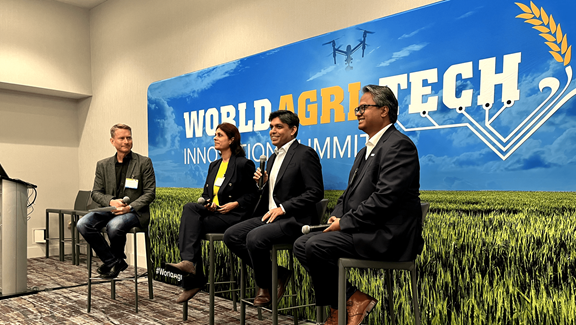How AI will democratize agriculture and feed the future

Panel insights
The World Agri-Tech Innovation Summit in March 2024 hosted more than 2,500 business leaders dedicated to exploring the global movement necessary to protect and strengthen the world's agri-food supply chain. At the summit, moderator Cameron Turner, Vice President of Data Science at Kin + Carta, hosted the panel, “Empowering Agriculture through AI Democratization.”
The following recap details the discussion between panel members, Nalini Polavarapu, Vice President of Data Science and Enterprise Analytics at Bayer, Feroz Sheikh, Chief Information and Digital Officer for Syngenta Group, and Ranveer Chandra, Chief Technology Officer for Agriculture and Food at Microsoft on how the democratization of AI will support agriculture.
Overall, the panel explored the critical need for the democratization of AI in all environments—from enterprises to farmers. Clearly demonstrating the value of AI is integral to this process and can be accomplished through use cases. Where adoption rates are low, practical engagement and personalization are potential approaches to improvement.
